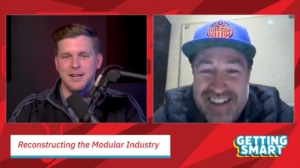How Off-Site Construction is Changing the Construction Industry
A tightening labor market is putting the squeeze on builders, making it more difficult for them to hire and retain skilled labor. This squeeze has led contractors to address the issue by utilizing architectural products that are built offsite (prefabricated). Using prefabricated architectural products in building projects allows contractors to make greater use of the workers they already have without sacrificing quality. Prefabricated architectural products also help reduce project waste and shorten product installation time.
Statistics Show Skilled Labor is in Short Supply
Over the past decade or so, laborers have left the residential construction industry in droves, mainly due to the bursting of the real estate bubble and the Great Recession. According to the Wall Street Journal, between April 2006 and January 2011, almost 2.3 million construction jobs were eliminated. The US Census Bureau reported that 60% of the construction workers displaced by the housing bust found employment in other industries or had left the labor market by 2013. Even worse, the Bureau says there is evidence of a persistent drop in the hiring of younger workers into construction jobs, exacerbating the shortage of skilled workers. A National Association of Home Builders survey of single-family homebuilders found that the number of respondents reporting a shortage of laborers in key trades rose from 21% in 2012 to 56% in 2016. This insufficiency of qualified workers makes it essential for builders to find alternative methods to complete jobs.
Prefabricated Architectural Products Reduce the Need for Skilled Laborers
Traditionally, raw materials are delivered to the construction site and onsite workers process and assemble them to complete the project. This means the majority of the work is done in an open, uncontrolled environment that is subject to the elements. Prefabricated construction, on the other hand, is completed in an offsite facility such as a factory or warehouse, offering a more controlled setting. Batches of components can be fabricated to industry standards more quickly, and then shipped to the job site for assembly, requiring less onsite labor. Offsite manufactured systems range from pre-cut components all the way up to advanced modular structures and are ideal for repetitive components of houses such as walls, floors, doors, windows, and railings.
Prefabricated Products Reduce Project Waste and Shorten Installation Time
Architectural products built offsite offer a number of advantages, such as improved product quality, lower cost, shorter installation time, and reduced project waste. In addition to reducing onsite labor time, modular construction also allows offsite and onsite work to occur simultaneously. So while prefabrication is being carried out in a controlled offsite environment, onsite work progresses at the same time, often resulting in project completion in just half the time required by traditional construction processes. And made-to-measure building components also minimize waste generation on the construction site.
AGS Stainless Manufactures Custom Prefabricated Railing Systems
When general contractors build railing systems onsite, they might choose off-the-shelf railing systems made of wood, composites, or aluminum because they are easier materials to handle. However, stainless steel railings are considerably stronger, more durable, and offer greater visual impact design than other commonly used railing materials. When contractors choose to include custom stainless steel railings on a project, they typically hire a local metal fabricator to design, manufacture, and install the railing system, often increasing the overall project cost and completion time. Having AGS Stainless fabricate the railing systems offsite can help bridge the gap. When custom railings systems are fabricated 100% offsite, there is no need for onsite cutting, welding or grinding of the components. Custom rails are shipped to the job site ready-to-be-installed with a few simple hand tools. The result is a project that benefits from customized, factory-crafted ornamental railings while reducing project waste and decreased installation time.
To find out more about the advantages of prefabricated stainless steel railing systems, contact AGS Stainless today.









